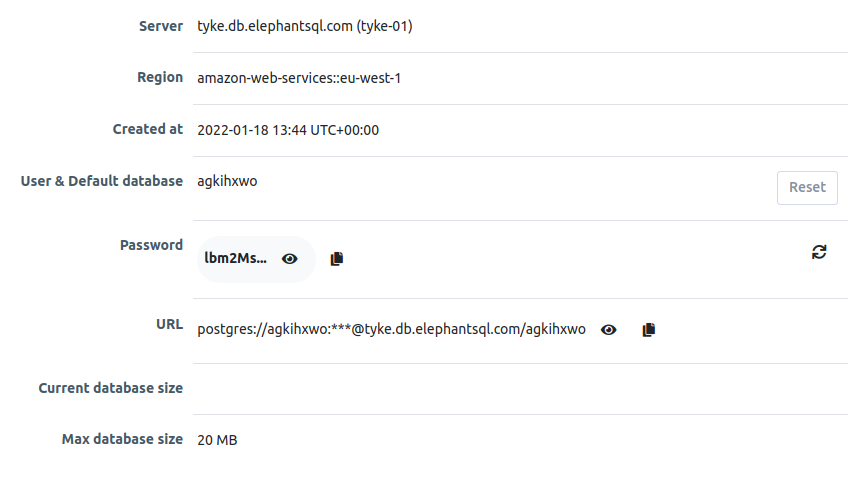In this workshop we're going to look at how to use express with a postgres database.
- Explain how REST API methods interact with a relational database
- Implement a REST API backed by a database using express and postgres
- Fork this repository
- Clone the forked repository onto your local machines
- In the root directory, type
npm install, which installs dependencies for the project
For this exercise we will also need to configure our database:
- In ElephantSQL, create a new instance
 Figure 1: A new ElephantSQL database instance
Figure 1: A new ElephantSQL database instance
- Copy the SQL statements from the files in the
sqlfolder and run them in your Elephant SQL browser. This will create the tables we need for this exercise as well as some test data.
- create-books.sql
- create-pets.sql
- insert-books.sql
- insert-pets.sql
-
Copy the URL of your new instance
-
Create a file
.envin the root directory of your project. It should contain a single line, which contains the environment variable used to specify the url from the instance created above; e.g (where the stars below will contain your password):
PGURL = "postgres://zzlrlrtu:****@tyke.db.elephantsql.com/zzlrlrtu" - Type
npm start, which starts a development server that will reload whenever you make any changes to source files.
All being well, you will have a terminal window that looks like the following:
Figure 2: The terminal window where the express server is running successfully
To interact with the database we will use the node-postgres library. We will use the query method to send SQL queries to the database sever and receive responses. The utils/database.js file establishes the connection to the database. Your instructor will walk through this with you.
Your instructor will demonstrate implementing the books API, now using a real database. You will then implements the Pets API.
- Take a look inside the
sqlfolder to see what data types with which you are working with. - Use ElephantSQL to check if your requests are successfully creating rows in the database (there will be mockData stored in there already).
